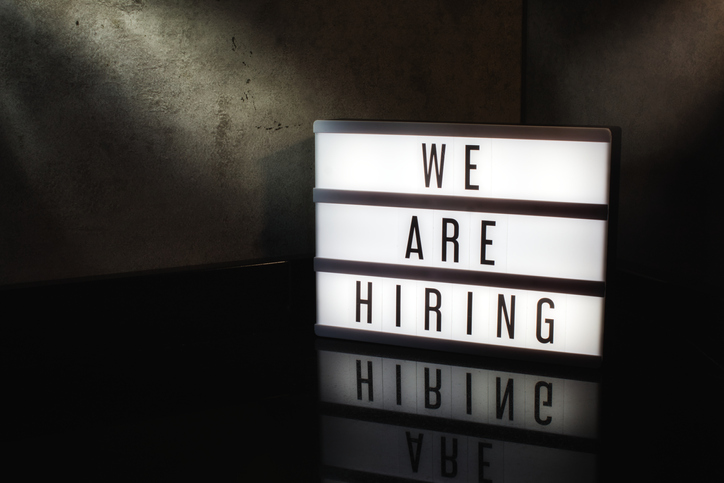
Australia relies on the professional workforce of its national intelligence agencies to collect, assess and disseminate the intelligence critical to Australia’s interests. They need the right professionals—and enough of them—to run the intelligence effort effectively.
But imagine having the most interesting job in the world, yet when you applied you didn’t know what you were applying for. And then once you were hired, you couldn’t tell anyone what you did for a living.
That’s what working in intelligence demands, but it poses a problem for the community’s recruiters. Amid global challenges and with a serious staffing and diversity deficit, agencies are struggling to attract the specialist skills and diverse thinking they need.
The national intelligence community is at a turning point. The Australian Signals Directorate plans to double its workforce under the REDSPICE initiative, the Office of National Intelligence needs top talent for its new Cyber and Critical Technology Intelligence Centre, and other agencies regularly advertise for new recruits.
With a shortfall of 30,000 cybersecurity professionals expected over the next four years and fierce competition for skilled workers across the labour market, Australia’s intelligence agencies face a tough recruitment and retention road ahead. The challenge is only compounded by the requirement for security clearances, a process that, even at its best, is time-consuming and complex.
With foreign and domestic spy chiefs speaking openly about this, it’s time to ask what role the Australian intelligence ‘brand’ plays in recruitment efforts. What can the intelligence community learn from the corporate world’s approach to branding? Is there a ‘dynamic ribbon’ for espionage? Or a ‘proprietary purple’?
Centralisation in Canberra, lack of candidate diversity and unique skill requirements are all part of the problem, but branding matters too. That’s because it’s not just about selling; it’s about how an organisation is perceived by and distinguished relative to its competitors, including potential employees. In the battle for talent, branding is essential, but it’s often overlooked.
Recruitment marketing involves creating awareness of and interest in an employer among potential recruits to attract the best candidates. Branding has become an important part of recruiting and of gaining an advantage. Brand equity—an organisation’s value based on public perception—drives job applications much like it propels purchases.
But can brand equity be created without brand awareness? After all, the work of Australia’s secret organisations is typically, well, secret.
Without perfect information, consumers of soft drinks, chocolate and, yes, future careers, face ‘decision difficulty’. To overcome that, they seek information, including signals such as an organisation’s brand, to judge quality. Brand associations can therefore heavily influence job application decisions.
So, what is the national intelligence community signalling?
The rebranded NIC jobs website paints a picture of a contemporary environment with happy, modern intelligence officers who are diverse and ordinary. It depicts a kaleidoscope of creativity and collaboration, where desks in open-plan offices are launchpads for innovation and individuality, and where tradespeople and graphic designers work alongside technologists and intelligence collectors.
This may well be true. But a century of spy filmmaking has reinforced an image of danger, intrigue, glamour and excitement that’s hard to counter. Words like ‘espionage’ and ‘spy’ conjure images of a hypermasculine James Bond, equipped with guns and gadgets, or any number of formidable female agents. So, clearly, there’s a mismatch between this stereotype and the proclaimed reality.
Consumers need the opportunity and tools for optimal decision-making. In the case of what it really means to spy, the disconnection between popular fantasy and lesser-known reality may be causing value uncertainty and increasing prospective employees’ confusion, leading them to question whether intelligence work is for them.
And who, exactly, are agencies targeting? While claiming that there’s no one ‘type’ of intelligence officer, recent campaigns typically focus on three demographic parameters: age (youth), sex (women) and ethnicity (non-Anglo). A past campaign didn’t bother with consumer classification: it simply invited the whole country to apply.
But targeting prospective candidates using demographics is inadequate compared to segmentation, which focuses on values, beliefs and influences, and psychographics, which considers the nuances of personality.
Research indicates that knowledge workers, the main target audience for intelligence work, are largely motivated by career growth, challenging work, and training and development.
The same study looked at the most used communication channels people use to find meaningful work. Current employees, word of mouth, media and direct experience ranked higher than brand and internet-based information. A number of studies suggest this is because direct experience or independent third-party endorsements tend to be seen as more reliable than brand reputation. But if an intelligence employee can’t discuss where they work, how can they be a brand ambassador for the community?
Director-General of Security Mike Burgess has described Australia’s intelligence agencies as unabashedly meticulous in all they do. To be seen as an employer of choice—moving beyond movie-star spies and outdated perceptions and towards intelligence as an inclusive profession—this meticulous approach must be applied to all facets of the intelligence brand, including for recruitment.
But a career portal facelift alone is likely to be ineffective. The independent intelligence review that’s now underway offers an opportunity for agencies to look outside the traditional national security sphere. There’s much to learn from the corporate experience about what makes for a memorable brand that weaves the threads of mission and loyalty. It’s about more than a colour scheme, a logo or a catchy tagline. It is about telling a compelling story and offering a differentiated narrative that helps potential talent feel like they could be part of something larger.
The Australian intelligence brand is distinctive and superior. It should be playing a significant role in drawing top talent. When done right, branding becomes the foundation upon which lasting relationships are built. Because, after all, without the right, and enough, professionals to run our intelligence effort, can Australia really be prepared to deal with the threats to come?

